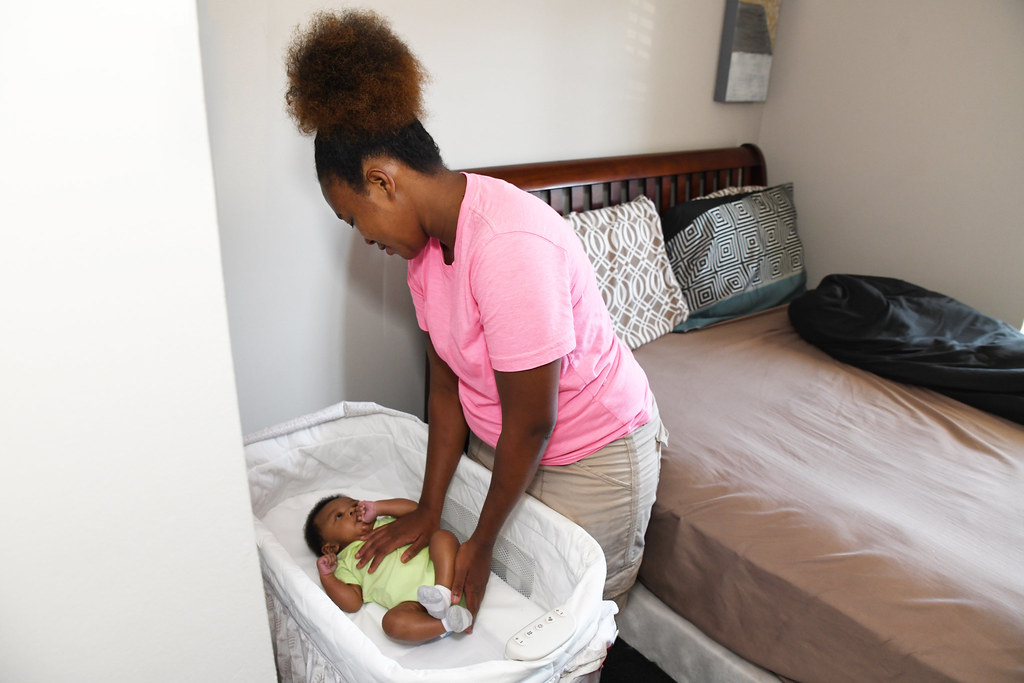Why It Matters

There is a paradox of the postpartum period: the most important time for a new birth parent to get checkups typically feels like the hardest time to fit them in. Postpartum visits provide opportunities to identify hypertension, postpartum depression, infections, and other risks to health and well-being. The challenge is that new parents are often more focused on keeping their newborn alive than on attending to their own needs. “The postpartum period can feel really overwhelming,” acknowledged Anna Marzano, RN, BSN, C-EFM, CBC, Perinatal Services Quality Specialist at U Chicago Medicine (UCM).
UCM participated in the Eliminating Inequities and Reducing Postpartum Morbidity and Mortality Learning Community, an initiative of the Institute for Healthcare Improvement (IHI) and Merck for Mothers. The goal of the initiative, which ran from January through June 2023, was to learn how to provide safer and more equitable care for Black mothers and birthing persons and their babies in the postpartum period.
Scheduling and keeping postpartum checkup appointments can be challenging. This can be even more difficult when patients deliver and receive prenatal care from different health systems. About 23 percent of the patients who deliver at UCM receive their prenatal care at Friend Health, an affiliated clinic site. “[Our patients] do really well bringing their babies in for their checkup,” said Marzano, but “they have a low return rate for [their own] postpartum follow-up appointments.” About 89 percent of Friend Health’s patient population identifies as Black or African American, so the UCM team recognized that focusing on this gap was an important opportunity to improve birth equity.
Marzano and her team were successful at ensuring that patients who had received prenatal care at UCM scheduled their postpartum checkup appointments before leaving the hospital. But, for Friend Health patients, their approach had been to simply remind them to get follow-up care. “There was no follow-up or help with that,” she explained.
The team realized that to improve attendance rates, they would need to collaborate with Friend Health. They set the following aim: “By March 31, 2024, of patients who receive care at Friend Health and deliver at UCM, 70 percent will have a postpartum appointment scheduled at Friend Health prior to discharge to ensure better access to postpartum care and resources.”
To reach this aim, the team worked out a comprehensive Plan-Do-Study-Act (PDSA) cycle. One key component was improving data sharing between UCM and Friend Health. This was not easy because they are separate entities and use different electronic health record systems. With “a lot of help from our security and IT friends,” said Marzano, the team gradually identified secure methods of communicating and sharing information. Their efforts included updating their discharge whiteboards, emailing encrypted patient lists to Friend Health, and identifying the target population for appointment scheduling.
The UCM team also carried out a “mini-PDSA,” which involved using rounds to identify patients who needed help setting up postpartum care. Obstetricians carried out their usual postpartum rounding and added a patient interview about follow-up care. When a patient reported being a Friend Health patient, they would inquire about setting up a follow-up appointment.
Marzano also reported that postpartum rounding turned up something unexpected. They identified a group of patients that did not have a plan for postnatal care. “We wouldn’t have figured that out without our mini-PDSA cycle,” she said. Obstetricians informed these patients of their options, asked if they would like to attend a postpartum appointment at Friend Health, and offered to help set it up.
The provider team was pleased with the new postpartum rounding process. “It was easy to incorporate into their workflow,” said Marzano. “[Postpartum visit discussions] fit smoothly into the conversation.”
Going forward, the UCM team plans to evaluate the program’s success, including measuring the percentage of Friend Health postpartum follow-up appointments scheduled, and the percentage of completed scheduled appointments. They will also compare postpartum appointment scheduling between Friend Health and UCM.
Another important finding is that the response from patients has been very enthusiastic. “Reaching out and offering those resources was something we hadn’t been doing well,” Marzano acknowledged. When they made these changes, patients were appreciative. “People were receptive to getting help for care, and thrilled that somebody was helping them.”
You may also be interested in:
Better Maternal Outcomes Quality Improvement Workbooks — Contain examples and templates to guide QI work focused on improving maternal health outcomes and equity.
Reducing Inequities in Postpartum Maternal Morbidity and Mortality
